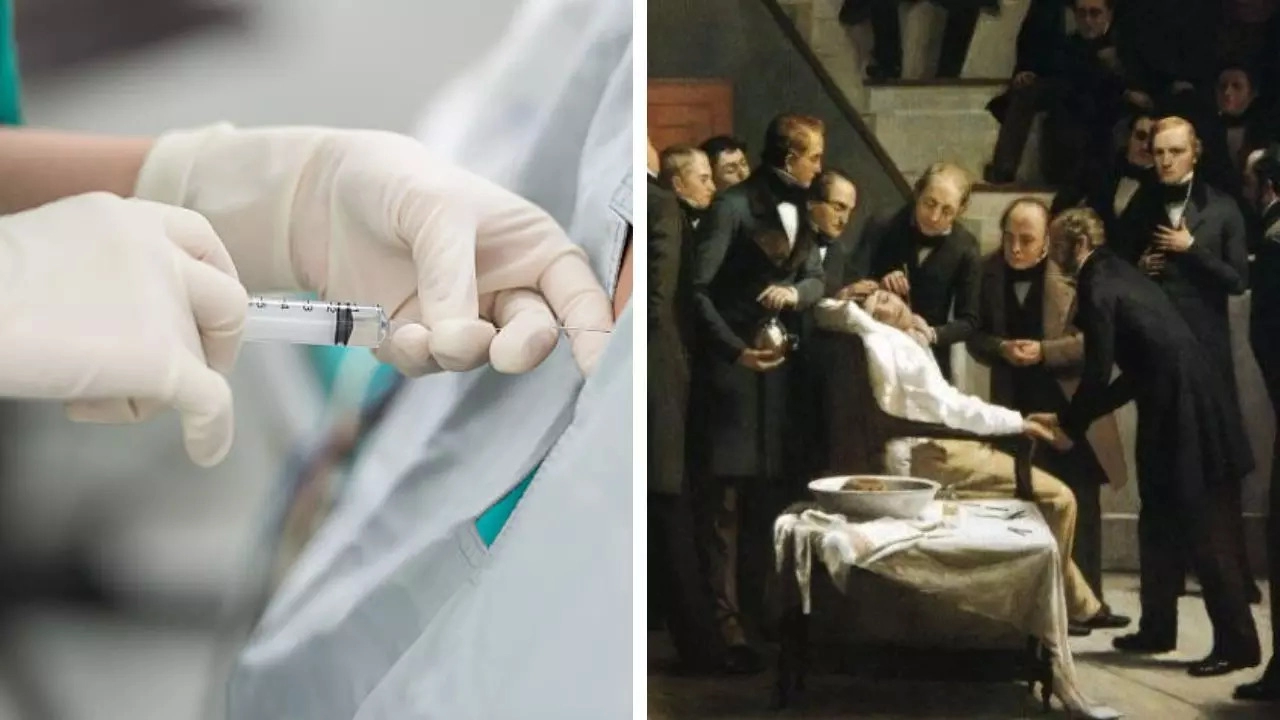
Anesthesia causes a temporary loss of sensation by interfering with nerve communication, and before it was used most doctors avoided surgical procedures (Pic: WFSA)
One of the most important inventions of medical science – anesthesia has literally been a lifesaver for many. Before this medication, those who underwent surgery – apart from the ailment they suffered, had to brave agonizing pain and horrifying mental and physical trauma, which was unbearable.
While anesthesia causes a temporary loss of sensation by interfering with nerve communication, before it was used most doctors avoided surgical procedures as much as possible before because they were not able to deal with a patient’s screams while performing the surgery. In the 19th century, the physical and emotional impact of performing surgery was so harrowing that the famous John Keats, who was a surgical student in London, quit the profession to become a poet.
When and how was anesthesia invented?
Records say anesthesia was invented on October 16, 1846, when American dentist William Morton used ether to successfully remove the mandibular tumour in front of a crowd at Massachusetts General Hospital.
According to Science Direct, Morton is credited with the discovery of anesthesia and the custom of saying, “Doctor, your patient is now ready,” which is even used today. Morton then went on to become the first professional anesthetist.
How was surgery conducted without anesthesia in earlier times?
In the early 1100s, doctors extensively put sponges immersed in opium and mandrake juice on the patient’s body before they began the operation to minimize pain and discomfort. Even though some records of Roman history - in medieval times say a concoction known as dwale was made to provide relief to the patient after surgery, there is no confirmation from the medical fraternity over its usage.
By the 17th century, doctors in Europe started making a pain-relieving liquid which was a combination of opium and alcohol – but the surgery had to be conducted really fast since the effect would not last too long. This led to mishaps and deaths among both patients and the staff.
Thereafter, scented anesthesia was also developed by mixing ethanol and sulfuric acid in a distillation process. Along with that many doctors used chloroform to treat pain, but the problem was that no one knew what the correct dosage was any mix-up would increase the chances of patients dying.
All of these combinations and experiments later led to the development of modern anesthesia.
However, in the early 20th century, ethylene, cyclopropane, and divinyl ether were introduced and were used as inhalation agents. Similarly, enflurane and methoxyflurane were commonly used, but they are no longer available. Intravenous agents then became popular in the 40s and 50s as well.
Get Latest News Live on Times Now along with Breaking News and Top Headlines from Health and around the world.

